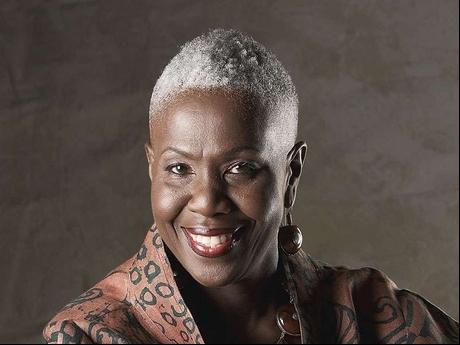One of the two Gleaners!
Carolyn Cooper
"I saw it in one of the two Gleaners." That's what a friend of mine said a couple of weeks ago when I asked her where she'd heard about a news item we were discussing. And she didn't mean online and print. We both had a good laugh. We couldn't believe that in the 21st century, Gleaner was still the generic name for a newspaper. And it's not just in Jamaica. Even in the diaspora, readers of a certain age think of British, Canadian or American newspapers as Gleaners.
The Gleaner Company must be quite pleased with the enduring appeal of its brand name. For almost two centuries! As Shabba Ranks would say, "Dem a brandish." On the other hand, I don't suppose the owner of that much younger newspaper would be amused to see that it is branded as one of two Gleaners - especially after 21 years in business.
If it's any consolation, having two 'Gleaners' is a good thing. It gives the consumer choice. Monopolies have a way of becoming very arrogant.
I used to write a column for 'the other Gleaner' in the 1990s. When I read some of those articles now, I'm amazed at how little things have changed over the last two decades. We keep on having the same quarrels about language and colour and class and beauty contests, for example.
TO DI WORLD
An earlier version of last week's column, 'Mirror, mirror on the wall', was published in 1993. And I proposed then that we start to judge beauty in distinct racial categories. My positively race-conscious Miss Jamaica competition - both World and Universe - could work in one of two ways.
Each year, contestants all of the same racial type could compete against each other: one year only African; the following year only 'Out of Many One'. And so on: European, Chinese and Indian. Every type of beauty in turn! Equal opportunity. Affirmative action.
Or, each year, we could have contestants of all the racial types competing in segregated contests. Each contestant would be judged in the usual categories, according to the standards of her own racial type. Not someone else's. The contestant who got the highest individual score, whatever her racial category, would be the overall winner.
This second option might be harder to manage. There would still be a sense of competition between racial categories. But just think of all the money the promoters could make running five beauty contests each year instead of just one! And it wouldn't matter if the judges of international contests couldn't see the beauty in our Miss Jamaica. We'd be confidently sending a message 'to di world' that we acknowledge the beauty of all of our women: 'red and yellow, black and white'.
BLACK DON'T CRACK
The following year, as the annual quarrel about beauty contests heated up, I wrote another piece about sidelined royalty: farm and festival queens. These competitions are not even billed as beauty contests. It's 'talent' that seems to count.
One of my male friends sent me a wicked response to last week's column: "Next time I see a good-looking, dark-skinned woman, I will, as seems to be required by the current code, have to compliment her for her intelligence and talent, the favourable characteristics which women of her look are stereotypically assigned."
Brains do last longer than beauty. And, in any case, since 'black don't crack', as the African-Americans say, the intelligent and talented black woman often ends up looking much better than many a 'beauty' in the long run!
QUEEN OF QUEENS
Heritage Month will soon be here. We continue to celebrate Queen Nanny of the Maroons as an alternative model of queenship. Beyond the beauty contest business! In 1994, The University of the West Indies Press published Maroon Heritage, edited by the archaeologist Kofi Agorsah, who excavated many sites in Jamaica.
In that collection, there's a brilliant essay by historian and poet Kamau Brathwaite in which he creatively makes sense of the myth that Nanny used her bottom to deflect the bullets of British soldiers: "There is no way that Nanny could have turned her back & done what they say she did. But she could have turned her back, lifted her skirt, & displayed the derriere as a symbol of derision & abuse which is a very common feature of 'the culture', as you know."
Well, all I could think of when I read that lovely bit of mythmaking by Brathwaite was the image of Nanny in a by-rider. I know some people will be absolutely offended by this imaginative 'disrespecting' of Nanny's queenly image. But, let's face it. The bottom is a very political surface in our culture. Sexual politics.
Which brings us to Miss Jamaica Dancehall. The potent female bottom in dancehall culture is surely related to the myth that Nanny used her bottom to ward off the bullets of British soldiers. In any case, in many African cultures, female elders will threaten to denude themselves as a way of bringing delinquent males in line.
So Queen Nanny can be seen in a new light: the sexy warrior queen. Perhaps, she's an unexpected role model for today's dancehall queens. A royal exposure of the female body! And you can say you saw it in the original Gleaner.
Carolyn Cooper is professor of literary and cultural studies at the University of the West Indies, Mona. Visit her bilingual blog at http://carolynjoycooper.wordpress.com. Email feedback to columns@gleanerjm.com and karokupa@gmail.com.

